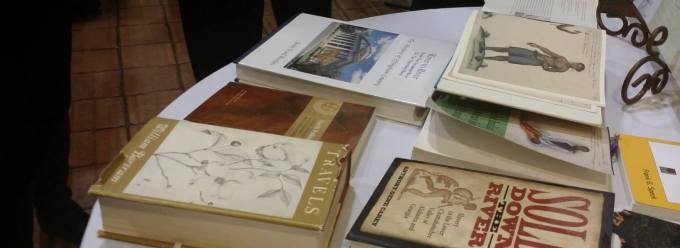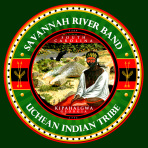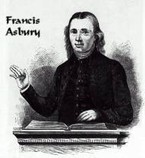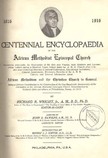Asbury A.M.E and Mission Schools in Indian Territory
The school at Asbury opened in August 1822, and by the end of the year had thirty-three Indian students. While African Creeks provided interpreters for the schoolmasters, apparently there were no African Creek children at the school.19
Lee Compere had similar experiences in establishing Withington Mission. With the notable exception of Jonathan Davis, one of Compere’s Creek students at the mission school, the majority of adherents were African Creeks. The opposition to evangelizing was more violent in this section of the Creek country where the Baptist mission was located. After William McIntosh was executed in 1825 and the majority of the Lower Creeks associated with the McIntosh faction emigrated to the Indian Territory in 1827 and 1828, the traditionalist faction came to the fore in tribal affairs. Opothleyohola, the “Speaker” and spiritual leader of the Upper Creeks, led the opposition to the missionaries. Opothleyohola issued an order that any Creeks or African Creeks caught attending Baptist worship services would be whipped. It was no idle threat. The sentences were carried out with a ferocity that shocked Compere and his family. On one occasion, while Compere was away, a group of Indians burst into a meeting being held by Mrs. Compere, seized twenty African Creek men and women, tied them to a post in front of the mission and then one by one, “beat them unmercifully.” Compere sent John Davis, his star pupil and sole Creek convert, to consult with the Creek chiefs and attempt to convince them to lift their ban. The chiefs’ remarks implied that the whippings were not motivated by fear of slave disobedience, but rather by the effects that preaching would have on traditional Creek practices that were rapidly eroding under the onslaught of white intrusion. Davis reported that Yohola Micco, the Upper Creek Chief, told him, “if they allowed the black people the liberty then the Indians would go to hear the preaching, and the Kings of the Towns would lose their authority.” The Upper Creek leadership also resented the missionaries pressing them to remove to the Indian Territory as the Lower Creek McIntosh faction had done.20
After the whipping incidents both the Methodists and the Baptists concluded that it would better to close their missions in what remained of the Creek country east of the Mississippi and concentrate their energies among those Creeks who had emigrated to the west. Both missions were closed in 1829. However, on occasion Compere continued ministering to African Creeks until 1832 from a mission he opened south of Montgomery, Alabama.21
Missionary activities began in the Creek country west of the Mississippi in the early 1830s after McIntosh’s followers had settled in at the fork of the Arkansas and Verdigris Rivers in the Indian Territory. John Davis, who emigrated to the west in 1829, began preaching for the Baptists with the aid of a few African Creeks. Roley McIntosh, who succeeded his half brother William as chief of the Lower Creeks in the West, gave his consent. The Creek agent objected, however, fearing that it might ignite a replay of events in the East and impede further removal efforts. The Presbyterians, hiding out from their nearby Union Mission in the Cherokee country, were the first to constitute a church among the Creeks in the west. Once again, the African Creeks were the first to come forward, providing “black exhorters” to preach to the mixed congregations of blacks, Indian and whites. John Fleming and his wife opened a mission just south of the Verdigris River and also opened a school there in early 1833. Fleming reported that even the “black people” were anxious to see their children go to school, but it is unclear whether any African Creek children actually attended the Presbyterian school. Fleming was a graduate of Princeton Theological Seminary, and he put his education to work in studying the Muskogean language with the goals of learning the language so he could better communicate with adherents and possible converts but also translating the Bible and assorted hymns into Creek. He devised a Creek alphabet and soon published an elementary Creek reader containing Bible stories and hymns, which would become known as the first book published in the Indian Territory. 22
The Methodists were also busy with the new arrivals. Several of the converts from the Asbury Mission began proselytizing among the Creeks, among them a young Creek Indian named Sam Checote, and the church they established in 1831 was primarily composed of African Creeks. The Methodists also established a day school. But unfortunately, African Creek slaves were also the first to be punished for accepting the missionaries’ teachings. In spite of Roley McIntosh’s consent, some of the other Creek chiefs and white traders were “violently opposed to the work of God and threatened their slaves with stripes for attending meetings and in some cases have inflicted them.” 23
The Advent of African Methodism in Arkansas and Indian Territory The first African M. E. Society in the State of Arkansas was organized by Local Deacon Nathan Warren, at Little Rock, in 1866, in the home of Mother Lucy Elrod, and her husband, Anthony Elrod, was the first class leader and steward. Revs. Peter Donty and Levi F. Carter were the first pastors.
The Arkansas Annual Conference was organized at Little Rock, November 9, 1868. Rt. Rev. J. P. Campbell presiding. Willitm A. Rector, a layman, acted as secretary. African Methodist Missionary work among the Indians in the Indian Territory, was begun when Aaron T. Gillett was sent from the Arkansas Annual Conference as a missionary in 1870. Elder James F. A. Sisson,
A white brother, was transferred from the Georgia A. M. E. Conference and was appointed as presiding elder by Bishop John M. Brown, over the Pulaski District, which included the Indian Territory, also.
This brother labored assiduously with George T. Rutherford, Granville Ryles and others, to spread the African M. E. Church among the several Indian tribes. Bishop T. M. D. Ward organized the Indian African M. E. Conference on October 25, 1879, in the home of Brother Billy Kile, at Yellow Springs, Indian Territory. Thus Ham began in an organized way to evangelize Japhet.







